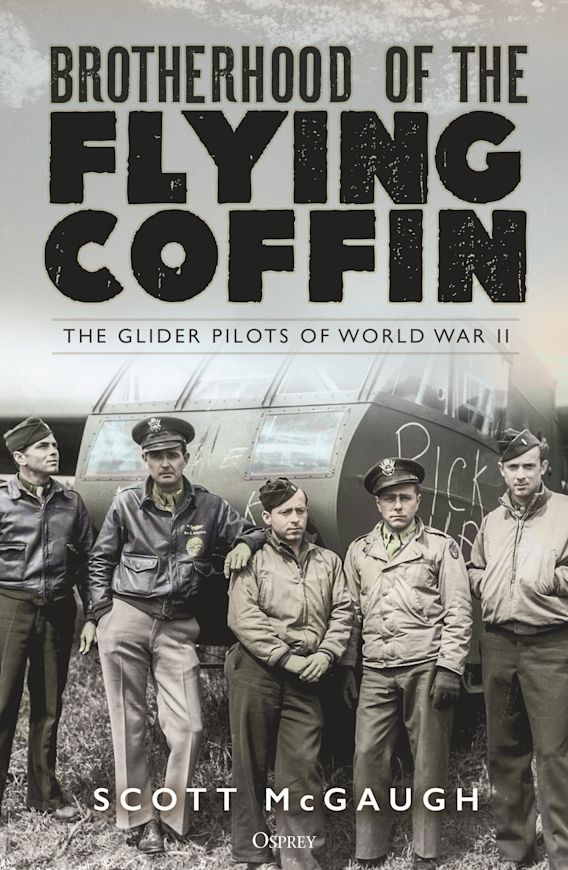
Looking for a good read? Here is a recommendation. I have an unusual approach to reviewing books. I review books I feel merit a review. Each review is an opportunity to recommend a book. If I do not think a book is worth reading, I find another book to review. You do not have to agree with everything every author has written (I do not), but the fiction I review is entertaining (and often thought-provoking) and the non-fiction contain ideas worth reading.
Book Review
Gliding to Glory
Reviewed by Mark Lardas
April 2, 2023
“The Brotherhood of the Flying Coffin: The Glider Pilots of World War II,” by Scott McGaugh, Osprey Publishing, 2023, 288 pages, $30.00 (Hardcover), $12.60 (Ebook)
Their tenure was short. Their heyday was 1941 through 1945. They flew into combat in unarmed, fabric-covered aircraft that lacked engines. Most completed only one combat mission. Almost none of them completed four. They were the pilots of the US Army’s gliders in World War II.
“The Brotherhood of the Flying Coffin: The Glider Pilots of World War II,” by Scott McGaugh tells their tale. It is the first major history of American glider pilots.
The book starts by introducing the combat glider and their pilots. The opening chapters present the history of the combat glider, showing how and when it was first used. McGaugh discusses its introduction into the US Army Air Force and the plans to incorporate it into future air assaults.
These opening chapters, which include the first US combat deployment of gliders at Sicily, show the difficulties in simply creating the glider force. Traditional aircraft manufacturers were too busy manufacturing warplanes, and thousands of gliders were needed. Manufacture was contracted to dozens of firms without prior aircraft experience. Structural problems plagued early gliders. (In one case, wing spar collapses were eventually traced to a faulty component built by a coffin manufacturer.) This was paired with the challenges of training thousands of new glider pilots.
The heart of the book looks at the Army’s use of gliders in combat. Besides Sicily, gliders flew combat missions at Normandy, Anvil Dragoon in Southern France, Operation Market Garden in the Netherlands, and Operation Varsity in Germany. All of these are discussed in detail in chapters devoted to these operations. Another chapter presents the glider drops conducted to resupply the 101st Airborne Division when it was isolated at Bastogne. Almost forgotten today, these proved the most hazardous flights of the war, with the highest casualties.
The book’s focus is on the men that flew the gliders rather than the campaigns in which glider assaults took place. McGaugh follows the men through training, deployment overseas and into their airborne arrival at the battlefield. He then traces their experiences in combat. They were supposed to be collected the day after the landing, but sometimes they remained in combat, at loose ends for days and occasionally weeks afterwards. McGaugh makes extensive use of memoirs and conversations with still-surviving veterans. The tale is told in their words.
“The Brotherhood of the Flying Coffin” offers insight into a forgotten and dangerous war. It is worth reading.
Mark Lardas, an engineer, freelance writer, historian, and model-maker, lives in League City. His website is marklardas.com.